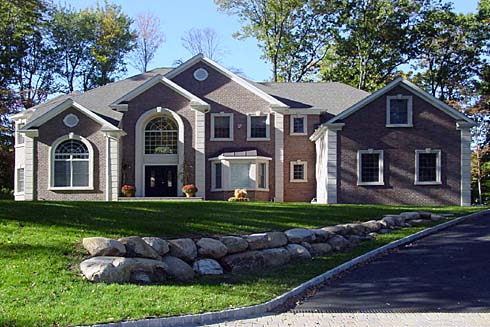LOW-INCOME HOUSING (QUALIFIED)
In the realm of real estate, low-income housing (qualified) represents a vital component of community development, social welfare, and affordable housing initiatives.
As defined under the 1986 Tax Act, qualified low-income housing projects are eligible for special tax credits of up to 9% of their cost (4% in certain situations), incentivizing the development and preservation of affordable housing units. However, the realization of these tax benefits necessitates strict adherence to rules governing tenant qualification, certification processes, and project financing, underscoring the intricate regulatory landscape that surrounds this segment of real estate.
Importance of Qualified Low-Income Housing
Affordable Housing Accessibility:
Qualified low-income housing projects play a pivotal role in expanding the availability of affordable housing options for individuals and families with limited financial resources. By leveraging tax credits to facilitate the development and maintenance of affordable units, these initiatives contribute to addressing housing affordability challenges and fostering inclusive, sustainable communities.
Community Development and Social Impact:
The development of qualified low-income housing projects fosters positive social impact by creating stable, secure housing opportunities for low-income individuals and families. This not only addresses immediate housing needs but also supports broader community development objectives, promoting economic stability, social equity, and neighborhood revitalization.
Compliance and Regulatory Framework
Tenant Qualification and Certification:
The stringent rules governing tenant qualification and certification processes are designed to ensure that the intended beneficiaries—low-income individuals and families—have access to the housing units. Compliance with income eligibility criteria, verification procedures, and ongoing monitoring is essential to uphold the integrity of qualified low-income housing projects and secure the associated tax credits.
Project Financing and Oversight:
The financing of qualified low-income housing projects involves navigating complex regulatory requirements, financial structures, and compliance frameworks. Developers and stakeholders must adhere to specific financing guidelines, regulatory oversight mechanisms, and reporting obligations to uphold the project's qualified status and optimize tax credit eligibility.
Conclusion
In the landscape of real estate, qualified low-income housing projects stand as a testament to the intersection of social responsibility, government incentives, and private sector engagement in addressing housing affordability challenges. The availability of tax credits under the 1986 Tax Act provides a powerful incentive for the development and preservation of affordable housing units, underscoring the pivotal role of public policy in shaping real estate dynamics. By upholding stringent compliance standards, navigating regulatory complexities, and embracing the social impact of these initiatives, stakeholders can contribute to the advancement of inclusive, sustainable communities and the realization of affordable housing opportunities for those in need.
In the landscape of real estate, qualified low-income housing projects stand as a testament to the intersection of social responsibility, government incentives, and private sector engagement in addressing housing affordability challenges. The availability of tax credits under the 1986 Tax Act provides a powerful incentive for the development and preservation of affordable housing units, underscoring the pivotal role of public policy in shaping real estate dynamics. By upholding stringent compliance standards, navigating regulatory complexities, and embracing the social impact of these initiatives, stakeholders can contribute to the advancement of inclusive, sustainable communities and the realization of affordable housing opportunities for those in need.
MORE REAL ESTATE TERMS
A, B, C, D, E, F, G, H, I, J, K, L, M, N, O, P, Q, R, S, T, U, V, W, X, Y, Z
Featured New Home

Featured Mortgage Brokers
- GENERATION MORTGAGE COMPANY, HILO, HI
1257 KILAUEA AVE STE 30
HILO, HI 96720 - TALMER BANK & TRUST, TROY, MI
2301 W BIG BEAVER RD STE 525
TROY, MI 48084 - PRIMARY RESIDENTIAL MORTGAGE INC, BALTIMORE, MD
1816 ALICEANNA ST # B
BALTIMORE, MD 21231 - MANN MORTGAGE LLC, LEWISTON, ID
247 THAIN RD STE 104
LEWISTON, ID 83501 - CASTLE & COOKE MORTGAGE LLC, GREENWOOD VILLAGE, CO
7400 E ORCHARD RD # 2900N
GREENWOOD VILLAGE, CO 80111